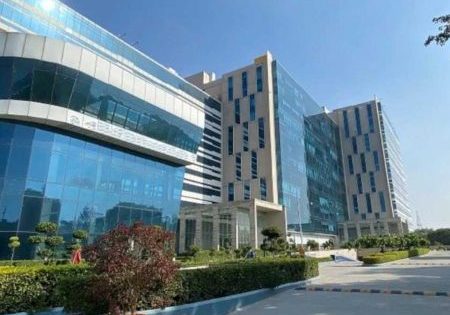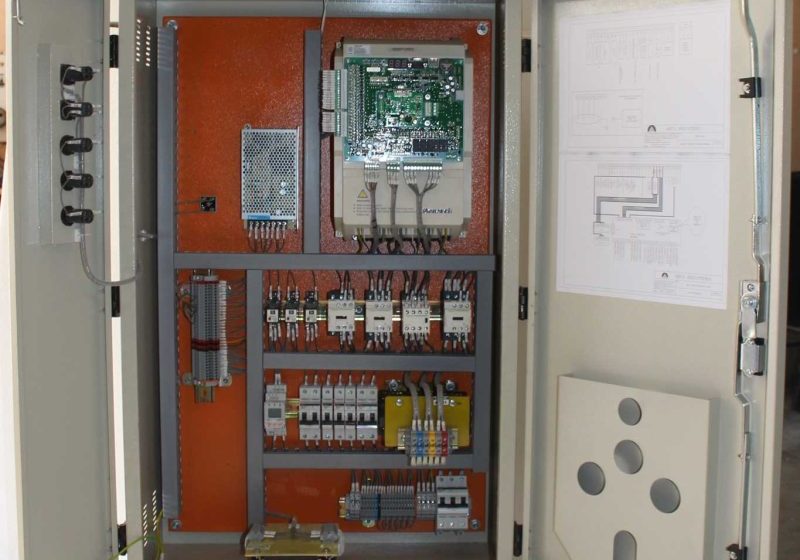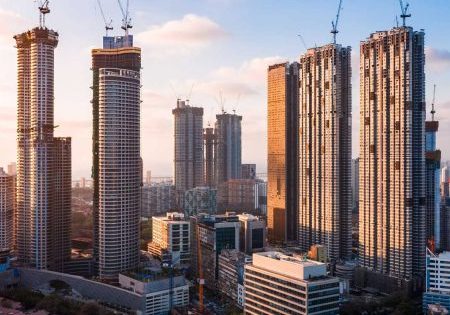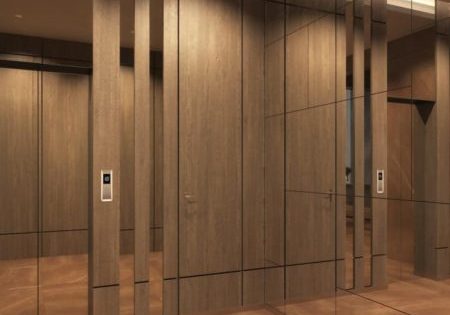“Almost” Back in Full Swing
Dec 4, 2022

Report explores the “return-to-work” status across different sectors.
submitted by Colliers-Awfis
As per a C-Suite Survey conducted by Colliers and Awfis, approximately 35% of occupiers have seen a majority (75-100%) of employees returning to offices. This includes a hybrid way of working wherein employees come into the office a few times a week.
After a gap of two years, the return to offices has gathered momentum with ebbing COVID-19 cases, signifying positive occupier confidence. At the same time, about 74% of the occupiers are looking toward distributed workspaces as a strategy to shift from location-centric to people-centric office spaces. This will enable flexibility for employees while furthering productivity gains for businesses.
The Colliers-Awfis joint report explores the status of the return-to-work movement across different sectors. It delves into how occupiers are likely to choose distributed workspaces and devise flex space strategies by understanding their current usage patterns and preferences.
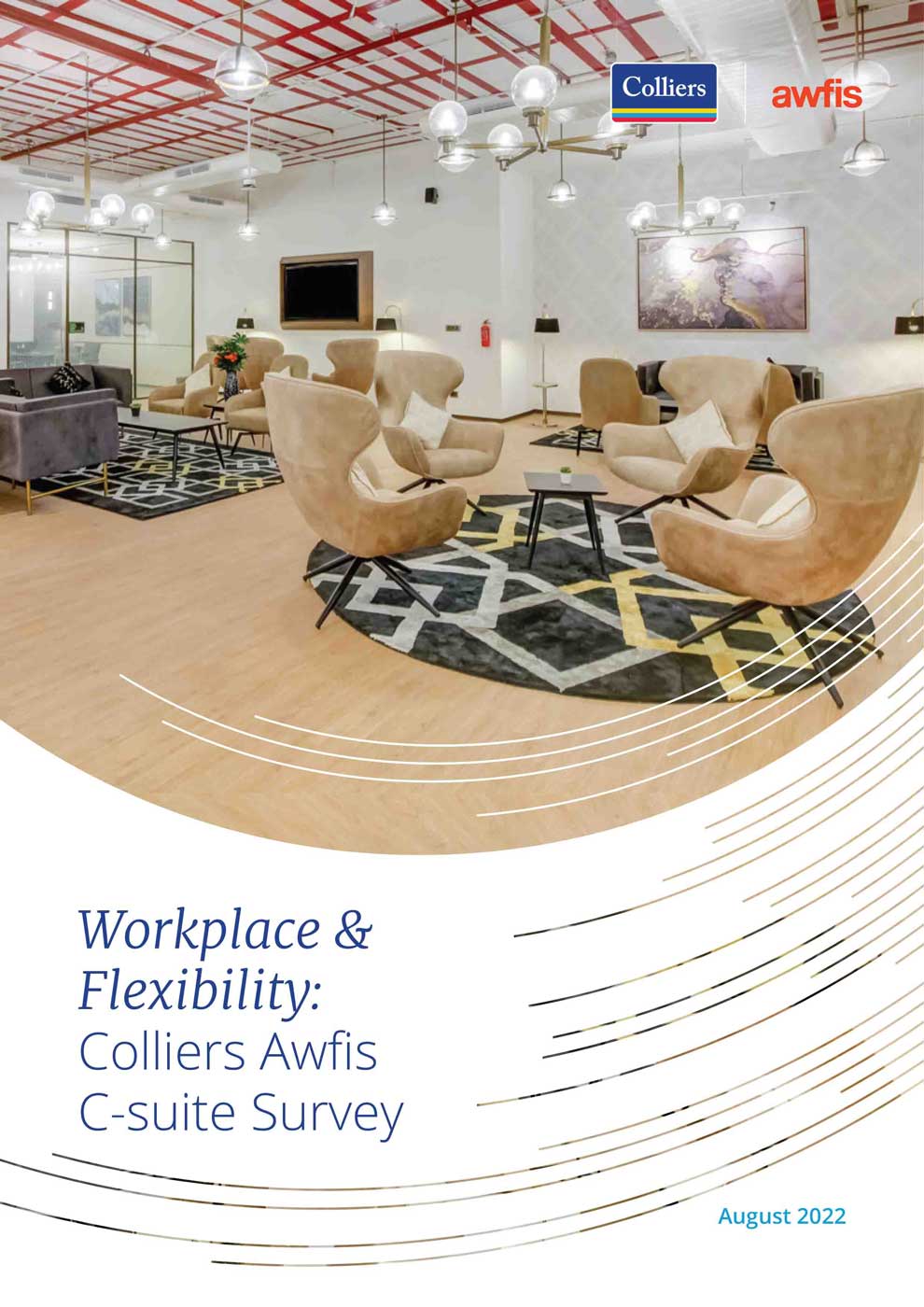
Ramesh Nair, CEO — India and managing director (MD), Market Development — Asia, Colliers, said:

“The survey has made it clear that a distributed workspace strategy is the way to go for occupiers in this new era of experiential workplaces, as occupiers emerge from the after-effects of the pandemic. Flex spaces, in particular, are leading this growth, as occupiers from varied sectors are housing teams in flex centers across cities. This shift in strategy also reflects in the leasing by flex operators — flex operators leased about 3.5 million ft2 of space in the first half of (H1) 2022 across the top six cities, almost three-fourths of the flex leasing in entire 2021.
“Further, the survey reveals that as occupiers straddle business goals and employee well-being together, about 74% of occupiers are looking at distributed workspace, and more than half of the IT/ITeS companies (the largest occupier group) prefer a distributed work model for their employees. Therefore, we can see opportunities for flex spaces not only in metro cities but also in non-metro cities. In fact, in non-metro cities, total flex spaces are likely to grow more than two-fold to 5.5 million ft2 by the end of 2022.”
The survey has made it clear that a distributed workspace strategy is the way to go for occupiers in this new era of experiential workplaces, as occupiers emerge from the after-effects of the pandemic.
— Ramesh Nair, CEO — India and MD, Market Development — Asia, Colliers
Amit Ramani, founder and CEO, Awfis, said:
“The findings of the survey are a testament to the success of the distributed work model and subsequently of flex spaces in catering to the ever-evolved workspace needs of India Inc. The survey unveils that currently 74% of occupiers have adopted flex centers for their workspace needs given the multiple benefits associated with flex working. Going forward, 77% of occupiers will include flex spaces as part of their workplace strategy. We expect exceptional demand in the future, driven largely by large corporates for de-densification of existing traditional offices.”
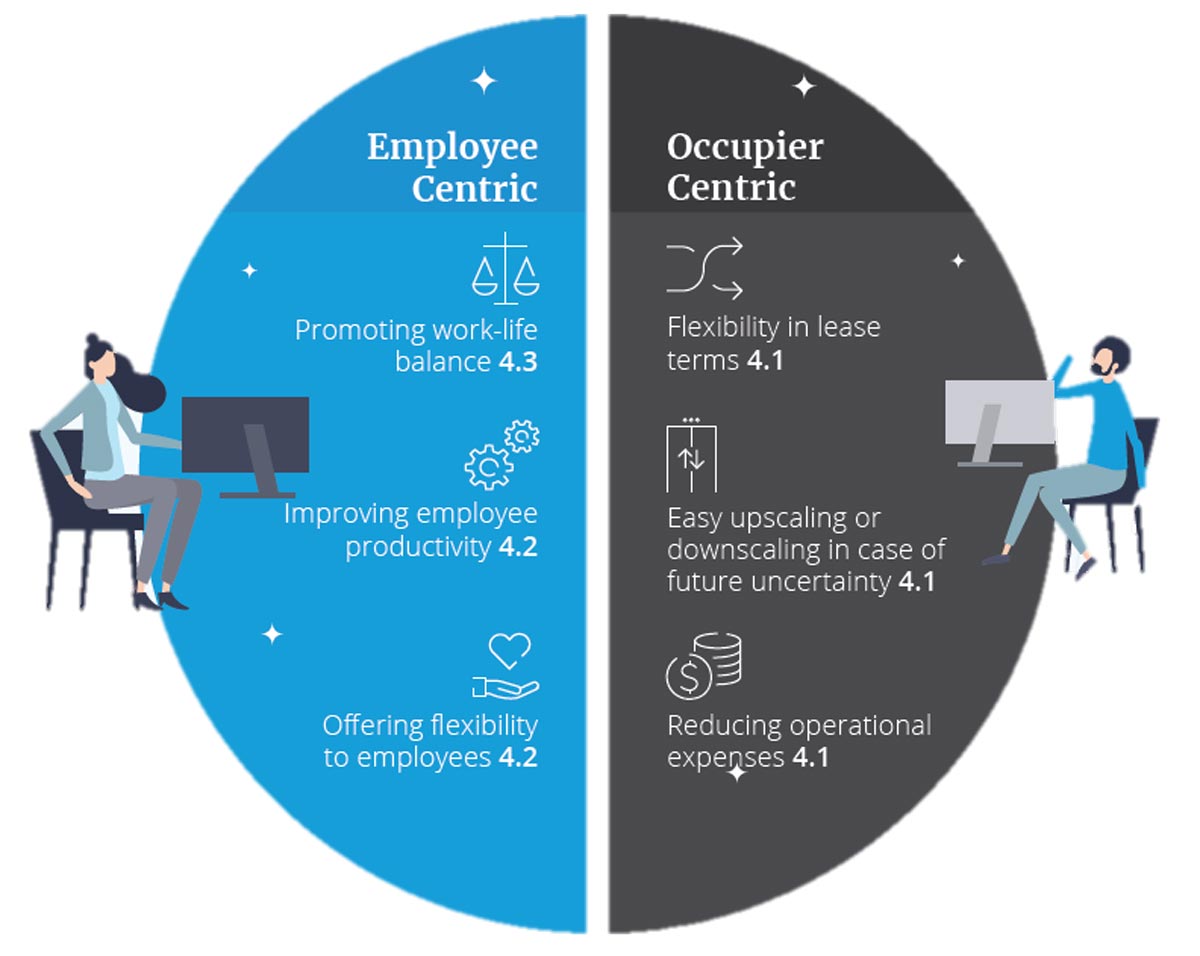
Sumit Lakhani, deputy CEO, Awfis, said:
“Keeping employee centricity at the forefront, 79% of the occupiers feel that distributed workplace strategy will be highly beneficial to save time and money. Additionally, work-life balance, mental well-being and team productivity are fueled when opting for flex spaces.”
Arpit Mehrotra, MD — Office Services, South India and head of Flex — India, Colliers, added:
“Flex spaces emerged as the most preferred distributed workspace strategy of occupiers, owing to the ease of adoption and benefits for employees. Occupiers see dual benefits arising out of distributed work in flex spaces. They view benefits from such a strategy as further enhancing employees’ overall harmony, while bringing more cost efficiencies to their organizations.”
About 53% of the occupiers prefer a hybrid workplace plan for their employees, working from home and office in varying degrees. Time and cost savings, increased employee convenience and overall well-being of employees are key priorities for occupiers, as they look to enable a distributed workspace strategy. About 79% of the occupiers who are ready to opt for flex spaces see time and cost savings as major benefits. Clearly, pursuing business goals in tandem with benefits to employees is at the core of occupiers’ interests.
In H1 2022, flex operators leased about 3.5 million ft2, accounting for about 13% of overall leasing in line with the surging demand for flex space by occupiers. Almost half of the occupiers said they will prefer to adopt flex spaces as a mode to enable distributed workspace. Interestingly, even non-metro cities are seeing a growth of flex spaces as occupiers look toward distributed workspaces.
Vimal Nadar, senior director and head of Research, Colliers India, said:
“About 90% of the occupiers from the e-commerce and consulting sectors are likely to include flex space in their current portfolio. Occupiers see dual benefits arising out of distributed workspaces. They view time and cost-saving benefits followed by better work-life balance for employees.”
As per a C-Suite Survey conducted by Colliers and Awfis, approximately 35% of occupiers have seen a majority (75-100%) of employees returning to offices. This includes a hybrid way of working wherein employees come into the office a few times a week.
After a gap of two years, the return to offices has gathered momentum with ebbing COVID-19 cases, signifying positive occupier confidence. At the same time, about 74% of the occupiers are looking toward distributed workspaces as a strategy to shift from location-centric to people-centric office spaces. This will enable flexibility for employees while furthering productivity gains for businesses.
The Colliers-Awfis joint report explores the status of the return-to-work movement across different sectors. It delves into how occupiers are likely to choose distributed workspaces and devise flex space strategies by understanding their current usage patterns and preferences.
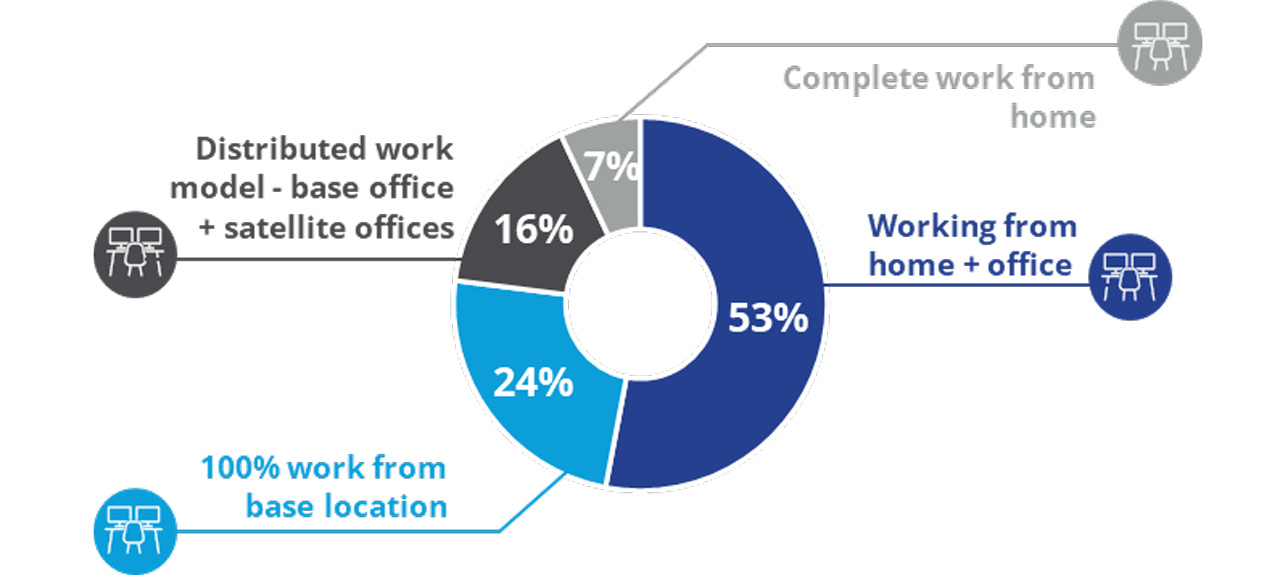
Ramesh Nair, CEO — India and managing director (MD), Market Development — Asia, Colliers, said:
“The survey has made it clear that a distributed workspace strategy is the way to go for occupiers in this new era of experiential workplaces, as occupiers emerge from the after-effects of the pandemic. Flex spaces, in particular, are leading this growth, as occupiers from varied sectors are housing teams in flex centers across cities. This shift in strategy also reflects in the leasing by flex operators — flex operators leased about 3.5 million ft2 of space in the first half of (H1) 2022 across the top six cities, almost three-fourths of the flex leasing in entire 2021.
“Further, the survey reveals that as occupiers straddle business goals and employee well-being together, about 74% of occupiers are looking at distributed workspace, and more than half of the IT/ITeS companies (the largest occupier group) prefer a distributed work model for their employees. Therefore, we can see opportunities for flex spaces not only in metro cities but also in non-metro cities. In fact, in non-metro cities, total flex spaces are likely to grow more than two-fold to 5.5 million ft2 by the end of 2022.”
Amit Ramani, founder and CEO, Awfis, said:
“The findings of the survey are a testament to the success of the distributed work model and subsequently of flex spaces in catering to the ever-evolved workspace needs of India Inc. The survey unveils that currently 74% of occupiers have adopted flex centers for their workspace needs given the multiple benefits associated with flex working. Going forward, 77% of occupiers will include flex spaces as part of their workplace strategy. We expect exceptional demand in the future, driven largely by large corporates for de-densification of existing traditional offices.”
Sumit Lakhani, deputy CEO, Awfis, said:
“Keeping employee centricity at the forefront, 79% of the occupiers feel that distributed workplace strategy will be highly beneficial to save time and money. Additionally, work-life balance, mental well-being and team productivity are fueled when opting for flex spaces.”
Arpit Mehrotra, MD — Office Services, South India and head of Flex — India, Colliers, added:
“Flex spaces emerged as the most preferred distributed workspace strategy of occupiers, owing to the ease of adoption and benefits for employees. Occupiers see dual benefits arising out of distributed work in flex spaces. They view benefits from such a strategy as further enhancing employees’ overall harmony, while bringing more cost efficiencies to their organizations.”
Key Statistics
- Telecom and consulting sectors see the highest (75-100%) rate of return to office.
- Sectors with the lowest (0-25%) rate of return are IT and new technology companies.
- Approximately 74% of occupiers are likely to adopt distributed workspace.
- Approximately 53% of occupiers prefer working from home and office as their preferred workplace portfolio strategy.
- Approximately 49% of occupiers are likely to adopt flex centers to enable distributed workspace, followed by setting up their own offices in metro and non-metro cities.
Source: Colliers, Awfis
About 53% of the occupiers prefer a hybrid workplace plan for their employees, working from home and office in varying degrees. Time and cost savings, increased employee convenience and overall well-being of employees are key priorities for occupiers, as they look to enable a distributed workspace strategy. About 79% of the occupiers who are ready to opt for flex spaces see time and cost savings as major benefits. Clearly, pursuing business goals in tandem with benefits to employees is at the core of occupiers’ interests.
About 53% of the occupiers prefer a hybrid workplace plan for their employees, working from home and office in varying degrees. Time and cost savings, increased employee convenience and overall well-being of employees are key priorities for occupiers, as they look to enable a distributed workspace strategy.
In H1 2022, flex operators leased about 3.5 million ft2, accounting for about 13% of overall leasing in line with the surging demand for flex space by occupiers. Almost half of the occupiers said they will prefer to adopt flex spaces as a mode to enable distributed workspace. Interestingly, even non-metro cities are seeing a growth of flex spaces as occupiers look toward distributed workspaces.
Vimal Nadar, senior director and head of Research, Colliers India, said:
“About 90% of the occupiers from the e-commerce and consulting sectors are likely to include flex space in their current portfolio. Occupiers see dual benefits arising out of distributed workspaces. They view time and cost-saving benefits followed by better work-life balance for employees.”
About Colliers
Colliers is a leading diversified professional services and investment management company. With operations in 62 countries, its 17,000 enterprising professionals work collaboratively to provide expert real estate and investment advice to clients. For more than 27 years, its experienced leadership with significant inside ownership have delivered compound annual investment returns of 20% for shareholders. With annual revenues of US$4.3 billion and US$77 billion of assets under management, Colliers maximizes the potential of property and real assets to accelerate the success of its clients, investors and people.
About Awfis
Awfis Space Solutions Pvt. Ltd. or ‘Awfis’ is a fully tech-enabled workspace solutions platform that provides products across the spectrum of work requirements, including Flex Workspaces, Enterprise Workspace Solutions, Design & Build Solution (Awfis Transform), Integrated Facility Management (Awfis Care), Remote Working Solutions (Awfis Now) and Work From Home Solutions (Awfis@Home). Awfis currently has the largest network of coworking spaces with 131 centers and 77,500 seats across 14 cities. Awfis is fully equipped to cater to the evolving needs of large-scale enterprises and organizations while aligning to the workspace needs of India Inc. amidst the “new normal.”
Get more of Elevator World. Sign up for our free e-newsletter.


